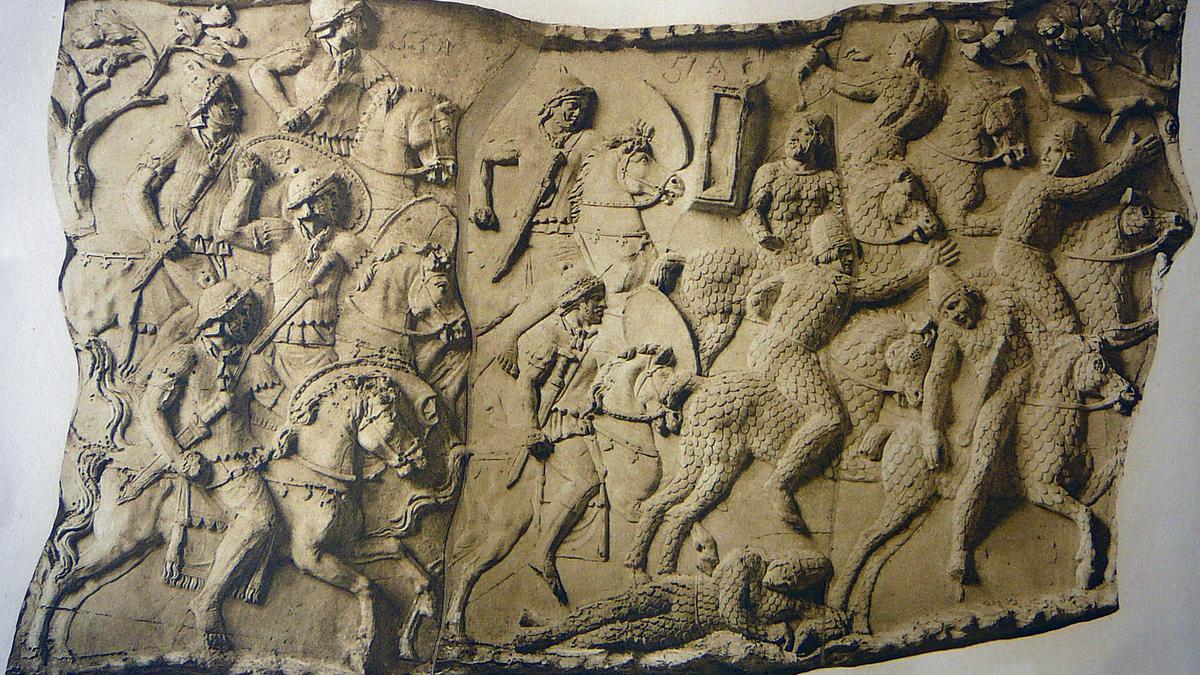
Review of Charles Allen’s Aryans: Myth and reality
The Hindu
Explore Charles Allen's last book, ‘Aryans’, to uncover the drama of prehistory, the shifting of great rivers, the catastrophes of climate change, and the Aryans' search for a people and a place.
There is so much to enjoy in Aryans, Charles Allen’s last book. For one, the drama it brings to prehistory — those otherwise long millennia that seem only to lead, at glacial pace, to the ‘real’ history of people and places we recognise. In Allen’s evocative telling, these are centuries filled with action and adventure: from the tectonic effects of a mutation, 4,000 years ago, that allowed some humans to digest milk — and thus unlock a potent new source of energy — to the shifting of great rivers, the flooding of vast plains, the catastrophes we dread today as our climate changes, that exist already at a great distance.
It is one such flooded plain, in fact, that is the heart of Allen’s “search for a people, a place and a myth”. We are upon the Pontic-Caspian steppe 13,000 years ago as an ice age ends. It is a great mass of land — from the Black Sea in Ukraine to Kazakhstan, from the Ural mountains in Russia to the Caucasian range. The ice melts, water seeps into the earth, new soil settles and the landscape transforms into “a sea of grasses”, perfectly suited for “the only species of herbivore hardy enough to survive the extreme winters... — horses.” Humans follow. Then, four thousand years ago, the climate changes again, “the same drastic shift in precipitation patterns” that ended the Mesopotamian, Egyptian and Indus Valley civilisations — and the people of the steppe begin to drift, first west into Europe then south to India and Iran.
In sum, and very simply, these were the Aryans, the horse-riding, milk-drinking, Proto-Indo-European-speaking nomads whose cultures, migrations and possible ‘homeland’ generations of scholars and enthusiasts — linguists, historians, archaeologists and, most recently, geneticists — have been trying to piece together. Their discoveries, as Allen recounts them, are full of thrills and surprise. Take the word ‘Aryan’ itself — we know it is first used in the Rig Veda, then the Zoroastrian Avesta. It gives Iran its name but also, it turns out, our author: ‘Allen’ may be a corruption of Aryan.
Language holds many clues to history in this tale. Did “key religious words... acquire opposite meanings” among Vedic Aryans and Zoroastrian Ariyas because Aryans and Ariyas descend from a larger group that suffered an acrimonious split? (Thus Proto-Indo-European deva (‘celestial being’) retains this meaning for Aryans but comes to mean ‘demon’ (daeva) to Ariyas). Meanwhile, an analysis of animal and plant names in Indo-European languages suggests that its speakers came from lands rich in salmon — and also the gow (cow), seu (swine) and ghans (duck or goose), but not monkeys, snakes or tigers, “nouns that were missing from the Indo-European vocabulary”.
The horse, on the other hand — to ride, to eat, to sacrifice — is critical to the archaeological discoveries around the Aryans and their descendants, most spectacular being the Scythian kurgans (burial mounds). The Scythians lived on the steppe c. 800 BCE, had no written language but left behind beautiful art in elaborate graves in which they were often buried with their horses. Sakas to the Persians, they were happier on horseback than on foot, not even using saddles, which may explain “why they were among the first people in history known to wear trousers.”
Equally adept horse-riders were the Celts, another sub-family of the Aryans and, like the Scythians, averse to writing. According to Julius Caesar, their druids thought it “unlawful” to write down their sacred verses. These druids were one of the three tiers of Celtic society — priests, warriors and workers — a tripartite division with, Allen notes, “striking” parallels to India’s “brahmanical caste structure”, and thought to be characteristic of Indo-European cultures.
Such was the allure of the Scythians and Celts that they both inspired modern nationalist sentiment, one in Russia the other in Western Europe. This too, it seems, is characteristic of the Aryans — “one of the most emotive, abused and divisive words in the English language” — to evoke unfounded chauvinism.

 Run 3 Space | Play Space Running Game
Run 3 Space | Play Space Running Game Traffic Jam 3D | Online Racing Game
Traffic Jam 3D | Online Racing Game Duck Hunt | Play Old Classic Game
Duck Hunt | Play Old Classic Game











